This article was written by Luna Rose. Luna Rose is an autistic community member who specializes in writing and autism. She holds a degree in Informatics and has spoken at college events to improve understanding about disabilities. Luna Rose leads wikiHow's Autism Project.
There are 66 references cited in this article, which can be found at the bottom of the page.
This article has been viewed 26,073 times.
It can be hard to find information about autism, and that includes information about the language that is most inclusive or accessible to use. You may have heard different things from different sources, and struggled to wade through the large amount of information. It's very important to write responsibly and insightfully about autism so that autistic people are supported and empowered in your writing. Luckily, everyone can learn how to do that.
Steps
Using Respectful Language
-
1Write "autistic people" instead of "people with autism." Despite what person-first advocates may insist, not every disability community prefers person-first language. Autistic people, as a group, prefer that "autism" be used as a regular adjective. This acknowledges that autism is part of them, and challenges the assumption that "autistic" is a bad word.[1] [2] [3] [4] The Autistic community largely prefers identity-first language, just like the Blind and Deaf communities.
- Thus, you would say "Jane Doe, an autistic writer" instead of "Jane Doe, a writer with autism" or "Jane Doe, a writer who suffers from autism." Also remember, saying “suffers with autism” only demonises and stigmatises autistic people.
- A minority of people on the spectrum prefer to be called "people with autism." If this is an individual's preference, respect it.
-
2Avoid categorizing people as "high-functioning" or "low-functioning." These labels are both inaccurate and unhelpful, since people called "high-functioning" may have their needs minimized and people called "low-functioning" may have their abilities minimized.[5] [6] [7] [8] This also includes similar labels, like distinguishing between "mild" and "severe" autism. Avoiding arbitrary labels helps respect the dignity and complexity of autistic people.
- Some people in the Autistic community use "support labels" as a shorthand, with the three categories "high support," "medium support," and "low support." These make fewer assumptions about a person's abilities. However, they are not universally used.
- Many autistic people are opposed to the label of "Asperger's" or "Aspie" for the same reason. Many people also have concerns about Hans Asperger's support for Nazis and eugenics.[9]
- The simplest way to describe a person's needs and abilities is to summarize them, such as "Smith uses a wheelchair, types with a keyboard, and lives with her husband and two daughters."
Advertisement -
3Recognize that autism is a disability. "Disability" isn't a bad word, and it's the easiest way to describe autism without negative connotations.[10]
- Avoid overly negative language like "disease," "illness," "epidemic," or "tragedy." Autism isn't a sickness, it doesn't kill people, it's not contagious, and it's not comparable to serious illnesses such as cancer.
- Avoid cutesy or trendy terms such as "handicapable" or "diffability."
-
4Use neutral or positive language instead of negativity. Autism isn't tragic, and it isn't helpful to paint autistic people or their loved ones as victims of a terrible disease. Avoid pitying language.
- Saying that someone is "suffering from" or "afflicted by" autism is victimizing language. Instead, just call them autistic.
- With lots of people and groups already treating autism like a disaster, you won't be adding anything new to the conversation if you do the same, nor would you be helping autistic people and their loved ones feel better. Use respectful, empowering language instead.
-
5Recognize that getting rid of autism would probably mean getting rid of autistic people. Talk about prevention or a "cure" isn't necessarily good for autistic people. Because autism is an inborn and lifelong trait that's deeply interwoven into the brain, there's no real way to take autism out of a living person. Thus, the only "prevention" would be selectively aborting autistic fetuses.[11]
- Many autistic people say they would not want to be "cured" of autism, because it would fundamentally change who they are.[12]
- Focusing too much on finding causes of autism may lead to prenatal testing, and it also takes funds away from research on quality of life supports.
- Instead of eliminating autism, many autistic people want better support and inclusion.
-
6Keep in mind that autism "awareness" and autism "acceptance" are two very different things. "Awareness" campaigns often focus on the negative, and can leave autistic people feeling alienated and unwanted. "Acceptance" campaigns take an inclusive attitude, and are meant to help autistic people feel welcome. Thus, autism awareness and autism acceptance have very different impacts.[13] [14] [15]
-
7Write accurately about non-autistic people. The opposite of autistic is non-autistic. This is the clearest and simplest language, with no negative connotations towards neurodiversity.
- Avoid using "normal" to describe non-autistic people. This doesn't have great implications.
- The word "neurotypical" applies to people who are non-autistic, and also without ADHD, bipolar disorder, dyslexia, and other brain-related disabilities. For example, a non-autistic person with Down Syndrome is not neurotypical.
- Some people use the word "allistic" to describe non-autistic people. However, the meaning of this word isn't as obvious to the uninformed reader, and it's controversial as a term.[16]
Handling Real-World Issues
-
1Respect the privacy of real people. If you are interviewing people for a story, keep it dignified and respect basic boundaries. All people, regardless of their age or ability, deserve a certain amount of privacy. Refrain from discussing a person's toileting abilities, self-injurious behavior, or other potentially embarrassing aspects in your writing unless the autistic person is a clear-headed adult who gives you explicit permission to write about it.[17]
- Publicly sharing someone's worst moments is exploitative, and can push a narrative of pity and negativity.
- Some parents violate their own children's privacy. If a parent gives you a very revealing quote, consider whether you would have been okay with your own family saying this for an article or news story. If not, keep it quiet.
- Assume that even if the autistic person doesn't seem aware now, they can hear more than they let on, and they could even read what you wrote about them in 10 years. Even if they don't, other autistic people who face similar challenges could read it.
-
2Take abuse seriously. The abuse of an autistic child is just as bad as the abuse of a non-disabled child. Avoid justifying it by saying the child's autism was "severe," or that it was an understandable result of a lack of services.[18] Show sympathy for the victims, not the perpetrators.[19]
- Abusive therapies are not just "tough love."[20] They can cause physical injury and PTSD.[21] [22] No child deserves to live in fear of an adult.
- Aversives, restraint, and seclusion are abusive and dangerous practices.[23] [24] [25] Kids have been seriously injured and even died while being pinned down or locked in cell-like rooms.[26] [27] [28] There's a difference between discipline that teaches people and discipline that terrifies them.[29]
- The murder of an autistic child is a horrific act, not a loving one.[30] It's not a "mercy killing" or a "final act of love." The death of a child is an awful thing, and this includes autistic children.[31] [32] Instead of discussing how "difficult" the child was, talk about them like you would any other child who was murdered by their parents.[33] Show the world what a senseless tragedy this was, and write about the wonderful child who will be missed.
-
3Refuse to endorse pseudoscientific beliefs or "cures" for autism. Alternative health scams related to autism are common, because worried parents of newly-diagnosed autistic kids are easy prey.[34] [35] [36] Don't endorse biomedical experimentation or other dangerous (and occasionally lethal) "solutions" for autism.[37] [38] Autistic people need to be accepted and supported, not force-fed bleach.
Writing Positively
-
1Consult autistic people. This is the simplest way to check how you're doing. Autistic people deserve to have a say in what they are called and how they are treated. The easiest way to ensure that you respect autistic people is to really hear what they have to say.
- Read through #ActuallyAutistic to see posts made by autistic people, and try the hashtag #AskAnAutistic to see or ask questions.
- If you know an autistic person who is willing, consider asking them to read your writing before you publish.
-
2Learn about common misconceptions about autism. Autism is deeply misunderstood and many of the things you have heard about it may be wrong. Listening to autistic people can help you better understand the reality. Some facts about autism include:
- Autism is inborn and lifelong. Scammers may claim that autism is caused by a number of things, such as vaccines, parasites, or "toxins." They will also claim to "cure" autism. However, autism begins in utero and is likely genetic.[42] [43] [44] Someone who is born autistic will stay autistic for the rest of their life.[45] With therapy and support, they can gain skills to help them live better lives.
- Autistics can be empathetic. Autistic people may experience empathy differently, and many of them struggle with cognitive empathy (mind-reading) but feel deep caring for others.[46] [47] [48]
- Not all autistics are good at STEM. Some are better at the arts (which you can see if you browse through autistic art online). Different autistic people have unique talents.
- Not all autistics have savant skills. The majority of autistic people have no savant skills. However, they may still have plenty of strong skills, just like non-autistic people do.
- Autistics are diverse. Autistic people exist of all genders, races, and backgrounds. They have different needs and abilities. No two autistics are alike.
-
3Remember that autistic people are people, not angels or demons. They aren't delicate, tragic inspirational figures, nor are they monsters that destroy their families' lives. They're people. They have hobbies, interests, moods, and relationships. They're ordinary. Stories that treat them like pets to "aww" over, or monsters causing a crisis, treat them like they aren't full people.
-
4Cite helpful organizations, not harmful ones. Unfortunately, the world is filled with groups that discuss autism while excluding autistic people at the same time. They may say inaccurate and even harmful things about autism.
- Autism Speaks is a high-profile example of an autism organization that mostly excludes and disempowers autistics.
- The Autistic Self-Advocacy Network and the Autistic Women & Nonbinary Network are very well regarded.
- Research anti-autism organizations with care. Sometimes, the things you find out may be disturbing, especially if you're a deeply empathetic person. Be mindful of your emotional health.
-
5Recognize the different associations of different symbols. If you're choosing artwork or metaphors for your writing, it helps to know the history behind the symbols you choose.
- The puzzle piece,[51] [52] [53] and the color blue (for #lightitupblue)[54] [55] [56] [57] are from anti-autism organizations and have negative connotations.
- The neurodiversity symbol (a rainbow infinity sign),[58] [59] [60] Autisticat, and red for #REDinstead[61] [62] [63] come from autistic people and have neutral to positive connotations.
-
6Acknowledge the diversity of autistic people. No two autistic people are alike. Autistic people vary in terms of abilities, needs, attitudes, and personalities. Thus, it's important to keep in mind that what is true or helpful for one autistic person may not be for another.
-
7Look at autism through the neurodiversity paradigm. This idea holds that developmental disabilities like autism aren't inferior ways of being, just different ones, and that they are part of human diversity. The neurodiversity paradigm includes autism-friendly attitudes like:
- Being "normal" isn't always a good goal. Sometimes, it's better to just be a happy autistic person than to try to be an unhappy person who doesn't "look autistic."
- Harmless traits shouldn't be suppressed. It's okay for autistic people to fidget, avoid eye contact, or have quirky body language.
- A better world for autistic people means that non-autistics should put in effort to being kind and caring, instead of autistic people doing all of the work themselves.
-
8Avoid blaming autistic people for all of their problems. The culture of blame around autism can be harmful to autistic people and their families. It's best to strive for fairness and respect.
- For example, the sentence "People with autism often face bullying because of their severe social deficits" blames autistic people for others' choice to bully them. The sentence "Autistic people are at higher risk for bullying, and bullies may see them as easy targets because of their social differences" acknowledges that the bullies are the ones who choose to mistreat others.
- For example, the sentence "Parents of autistics endure extreme stress dealing with their children" blames autistic children for family problems and could make autistic readers feel guilty or worthless. The sentence "Parents of autistic children may struggle to cope with stress, as it can be hard to deal with the stigma while fighting to help their child" acknowledges outside issues and is kinder to autistic people.
-
9Keep in mind that success is not a non-autistic trait. Autistic people can be successful, and that doesn't mean that they're "defeating" or "overcoming" autism.[64] People can be autistic and talented at the same time.
- A sentence like "She wrote a brilliant book, despite her autism" claims that autism is a barrier to writing. In reality, some autistic people say that their autistic traits enhance, or do not impact, their writing skills. It would be more accurate to just say "She wrote a brilliant book" or "She wrote a brilliant book, despite nobody believing in her."
- If you're looking to highlight their triumph over big obstacles, look at ways they challenge society: defying stereotypes, breaking expectations, or igniting change. Just because they're still autistic doesn't make their achievements any less exceptional.
-
10Look through the paradigm of the social model of disability. This way of thinking holds that disability is not caused by someone's brain or body being less capable, but by society's lack of accommodations. Under this idea, autistic people aren't broken or deficient—they just have needs that aren't being met.[65] This takes a kinder and more accepting approach to diversity.
- Consider nearsightedness as an example of an inability that isn't a disability. People with nearsightedness can't see as well. But society accommodates this by offering glasses and contacts, and no employer would doubt someone's competence based on their nearsightedness. If all conditions, such as deafness or paralysis were accommodated, then disability would cease to exist.[66]
- Many of autistic people's problems aren't caused by autism, but by a lack of acceptance and support.
-
11Think about the impact you want to have on the world. Do you want to help make the world a more accepting place? Do you want to help autistic people feel good about themselves, and encourage non-autistic people to be kind to autistic people? What are your goals? How can you achieve them?
-
12Remember that autistics and their loved ones will read what you're writing. Autistics with low self-esteem will read your work.[67] Parents who are scared after a recent diagnosis will read your work. Re-read your work, imagining how these people might feel, and how you can support them.
References
- ↑ https://www.identityfirstautistic.org/
- ↑ http://autismmythbusters.com/general-public/autistic-vs-people-with-autism/jim-sinclair-why-i-dislike-person-first-language/
- ↑ https://musingsofanaspie.com/2014/06/18/the-logical-fallacy-of-person-first-language/
- ↑ https://awnnetwork.org/failings-person-first-language/
- ↑ http://www.autistikids.com/functioning-labels.html
- ↑ https://www.identityfirstautistic.org/functioning-labels-
- ↑ https://ollibean.com/problems-functioning-labels/
- ↑ https://www.autismspectrumexplained.com/our-blog/on-functioning-labels
- ↑ https://www.scientificamerican.com/article/the-truth-about-hans-aspergers-nazi-collusion/
- ↑ https://misslunarose.home.blog/2019/07/04/autism-is-disability/
- ↑ https://www.theguardian.com/commentisfree/2009/jan/14/autism-health
- ↑ https://autisticmama.com/why-dont-autistics-want-a-cure-for-autism/
- ↑ http://autisticadvocacy.org/2012/04/acceptance-vs-awareness/
- ↑ https://keepkidshealthy.com/2017/04/02/autism-acceptance-vs-autism-awareness/
- ↑ http://www.autismacceptancemonth.com/awareness-vs-acceptance-do-words-matter/
- ↑ http://withasmoothroundstone.tumblr.com/post/85616323075/allistic
- ↑ http://www.squidalicious.com/2013/10/how-not-to-write-news-article-about.html
- ↑ https://hellomichelleswan.com/lack-of-services-does-not-cause-child-abuse/
- ↑ https://ollibean.com/wrong-murder-autistic-child/
- ↑ http://unstrangemind.com/aba/
- ↑ https://www.emeraldinsight.com/doi/abs/10.1108/AIA-08-2017-0016
- ↑ https://www.cbc.ca/news/canada/montreal/aba-therapy-hidden-camera-1.3597575
- ↑ https://www.psychologytoday.com/us/blog/autism-in-real-life/201201/students-traumatized-in-special-education-across-america-seclusion
- ↑ https://www.publicschoolreview.com/blog/seclusion-and-restraint-how-some-public-schools-allow-abuse-in-classrooms
- ↑ https://psmag.com/education/restraint-and-seclusion-and-the-death-of-max-benson
- ↑ https://www.ajc.com/news/crime--law/school-where-year-old-with-autism-died-after-being-restrained-violated-state-rules/LwLGvVY15YJ77MRWcyspJN/
- ↑ http://edition.cnn.com/2008/US/12/17/seclusion.rooms/
- ↑ https://www.texastribune.org/2009/11/02/disabled-students-restrained-in-public-schools/ (Contains photos of injured children)
- ↑ https://www.nbcnews.com/news/education/thirteen-year-old-activist-autism-wants-close-seclusion-rooms-schools-n935356
- ↑ http://www.cnn.com/2014/11/10/opinion/perry-autism-london-mccabe/index.html
- ↑ https://justkeepstimming.com/2018/11/01/anger/
- ↑ https://www.oregonlive.com/pacific-northwest-news/2015/06/the_first_fathers_day_after_hi.html
- ↑ http://miscellanynews.org/2016/09/14/opinions/media-erases-autistic-victims-of-violence/
- ↑ https://www.theguardian.com/science/blog/2015/jul/15/autism-how-unorthodox-treatments-can-exploit-the-vulnerable
- ↑ https://www.buzzfeed.com/tomchivers/how-online-filter-bubbles-are-making-parents-of-autistic
- ↑ https://www.theatlantic.com/health/archive/2016/09/fringe-therapies-spectrum/501023/
- ↑ https://www.chicagotribune.com/lifestyles/health/chi-autism-treatments-nov22-story.html
- ↑ https://sciencebasedmedicine.org/the-autism-biomed-movement-uncontrolled-and-unethical-experimentation-on-autistic-children/
- ↑ https://www.bmj.com/content/342/bmj.c5347.full
- ↑ https://www.vox.com/2018/2/27/17057990/andrew-wakefield-vaccines-autism-study
- ↑ http://www.researchautism.net/autism-interventions/our-evaluations-interventions
- ↑ https://www.sciencedaily.com/releases/2014/03/140326181909.htm
- ↑ https://www.spectrumnews.org/news/autism-genetics-explained/
- ↑ http://time.com/4956316/how-much-of-autism-is-genetic/
- ↑ http://www.autism.org.uk/about/what-is/asd.aspx
- ↑ https://musingsofanaspie.com/2013/01/17/the-empathy-conundrum/
- ↑ https://www.scientificamerican.com/article/people-with-autism-can-read-emotions-feel-empathy1/
- ↑ https://www.myaspergers.net/adults-with-aspergers/startling-facts-aspergers-empathy/
- ↑ https://www.huffingtonpost.com/entry/speechless-disability-porn_us_5877ddf6e4b0e58057fdc342
- ↑ https://www.theodysseyonline.com/why-inspiration-porn-is-harmful-to-the-disabled-community
- ↑ https://www.disabilityscoop.com/2017/08/29/is-time-ditch-autism-puzzle-piece/24095/
- ↑ https://learnfromautistics.com/the-problem-with-the-autism-puzzle-piece/
- ↑ https://www.disabilityscoop.com/2018/02/02/autism-journal-abandons-puzzle/24668/
- ↑ https://www.motherjones.com/politics/2017/04/trumps-autism-awareness-effort-not-show-support-autistic-people/
- ↑ https://metro.co.uk/2018/03/26/this-is-why-i-will-never-light-it-up-blue-for-autism-awareness-we-do-not-need-a-cure-because-autism-is-not-a-disease-7408706/
- ↑ https://autisticmama.com/do-not-light-it-up-blue/
- ↑ https://leftbrainrightbrain.co.uk/2017/04/02/light-it-up-blue-isnt-autism-awareness-its-autism-speaks-advertisement/
- ↑ https://www.disabled-world.com/disability/awareness/neurodiversity/
- ↑ http://www.thinkingautismguide.com/2015/10/neurotribes-and-proper-use-of.html
- ↑ https://autisticalex.wordpress.com/2014/04/12/why-you-need-to-stop-using-the-puzzle-piece-to-represent-autistic-people/
- ↑ https://www.inquisitr.com/4109798/light-it-up-blue-autistic-adults-suggest-red-instead/
- ↑ https://www.themomkind.com/redinstead-not-autism-speaks/
- ↑ https://www.nyunews.com/2018/04/09/4-10-ops-sattur/
- ↑ https://justkeepstimming.com/2018/07/01/no-im-not-overcoming-autism/
- ↑ https://www.identityfirstautistic.org/social-model-of-disability
- ↑ https://misslunarose.home.blog/2019/07/04/autism-is-disability/
- ↑ https://justkeepstimming.com/2018/11/07/were-listening/
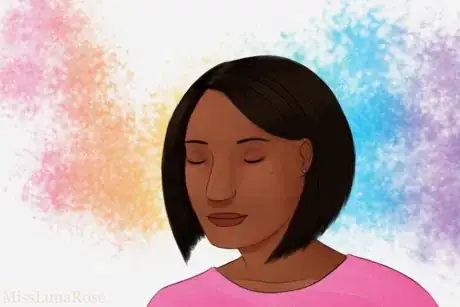
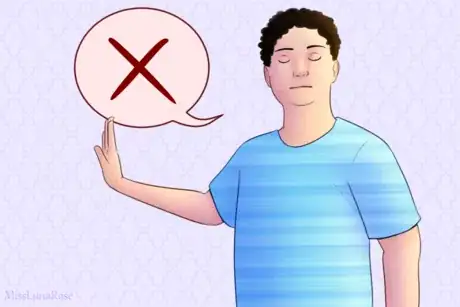
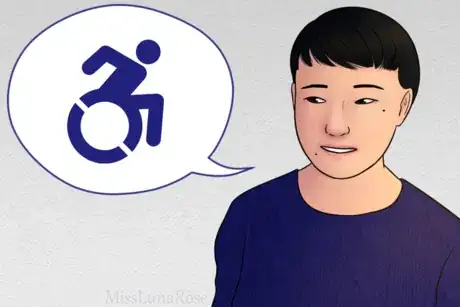
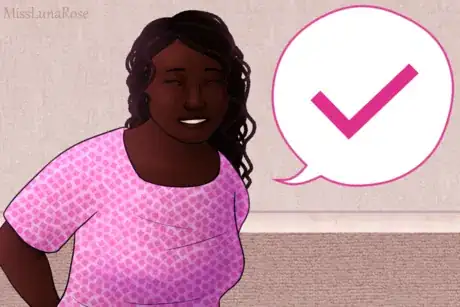
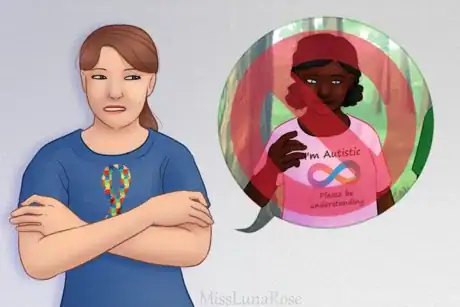
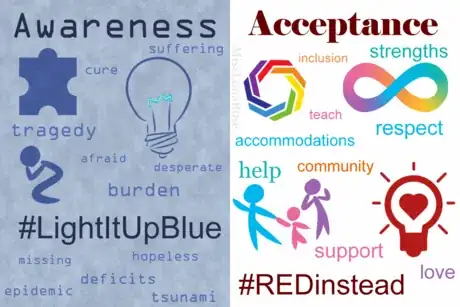
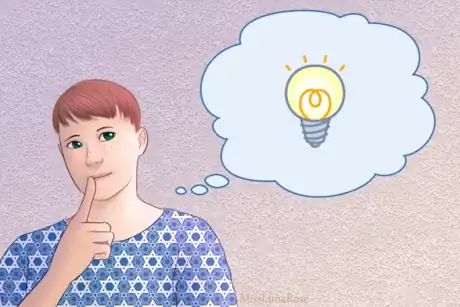


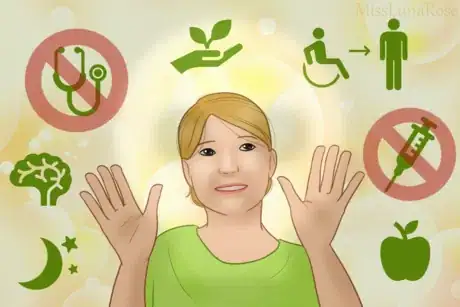


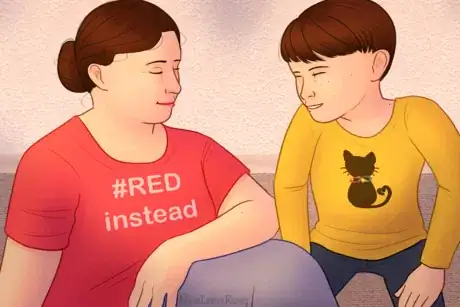
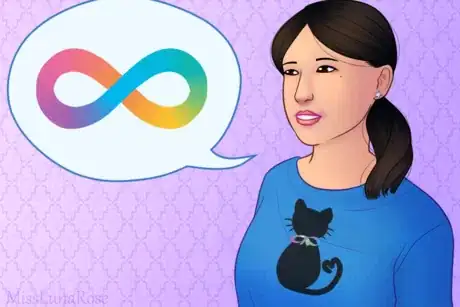
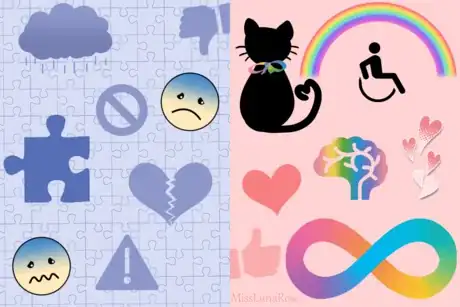
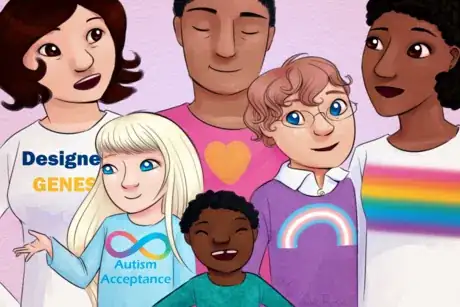

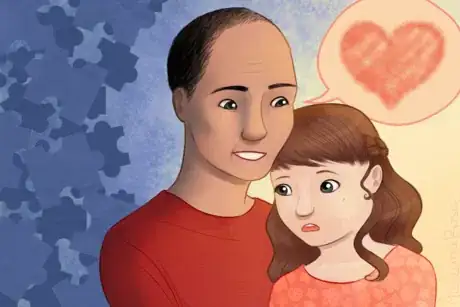
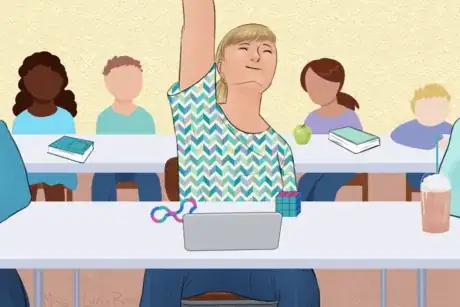
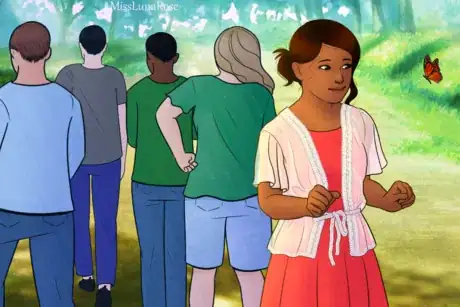

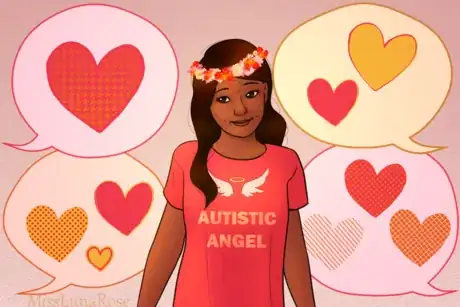
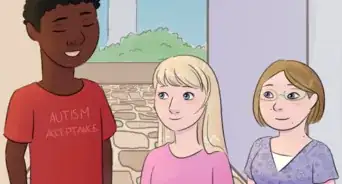
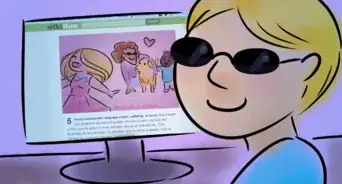

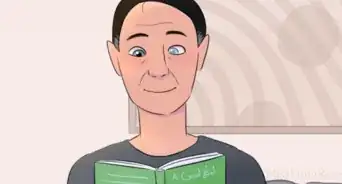

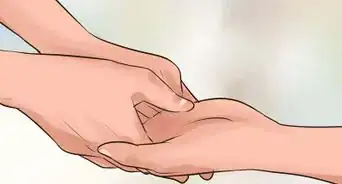
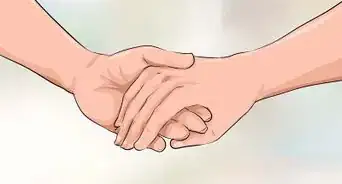
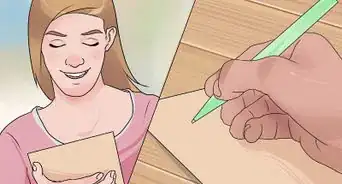


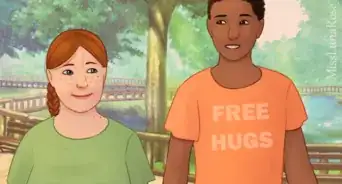









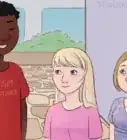


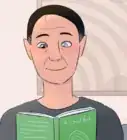



































Medical Disclaimer
The content of this article is not intended to be a substitute for professional medical advice, examination, diagnosis, or treatment. You should always contact your doctor or other qualified healthcare professional before starting, changing, or stopping any kind of health treatment.
Read More...